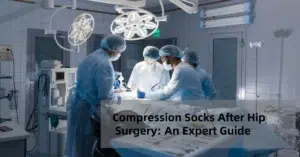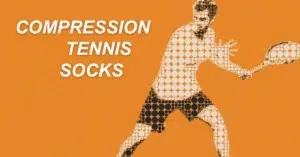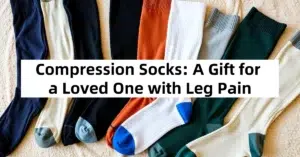Compression socks are specially designed socks that are a little tighter than normal socks. They help you with blood circulation in your legs and keep the warmth. Patients having Deep Vein Thrombosis and other blood clotting issues may use these compression socks. Most soccer players also use such compression socks to maintain their athletic performance. In this guide to compression socks, you will be able to know what compression socks are and how they can help you keep your blood circulation better.
Understanding Compression Socks
What are Compression Socks?
Compression socks, also known as compression stockings, are used to maintain blood circulation in your legs. The design of the socks is a bit different from those of normal socks. They use graduated compression, where the compression level decreases from the ankle to the top of the socks. It helps the blood flow towards the heart well and offers lesser resistance against gravity.
Different materials are used in compression socks, including nylon, Spandex, polyester, merino wool, copper-infused yarns, etc. The quantity of these materials may vary in different types of compression socks. Nylon, Spandex, and polyester play a huge role in maintaining the correct compression levels.
A higher level of nylon content provides softness, while Spandex offers stronger compression. You need to see which one is favorable to you. The doctors advise compression therapy if you have felt muscle fatigue.
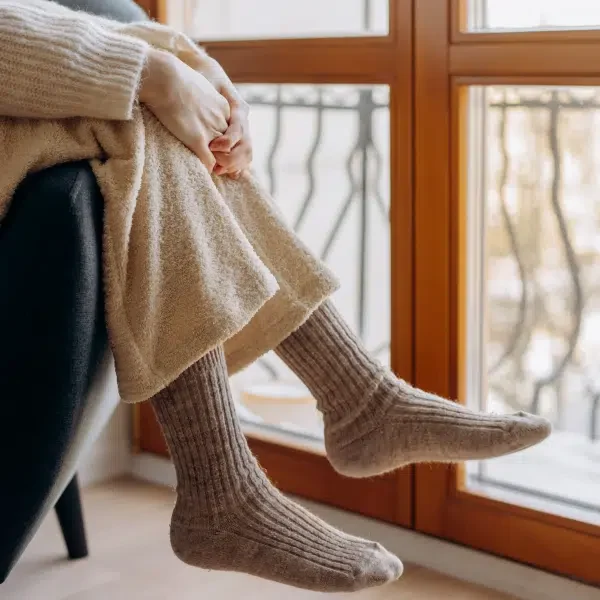
How do Compression Socks Work?
The main purpose of compression socks is to maintain the blood flow in your body, especially your legs, as they are made to be worn there. The blood flows freely through the arteries and veins and takes that blood back to your heart through a significant push provided by the body. More oxygen flows through the arteries, prevents swelling, and helps in quicker recovery.
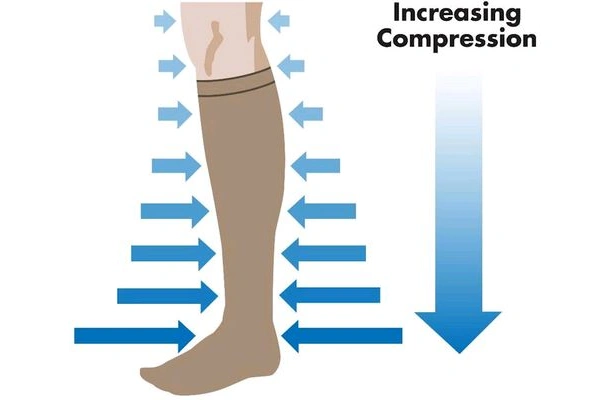
If there is a clot in your veins, it can create pain and swelling in your legs. It could be the worst case if that clot passes through the veins and gets stuck somewhere else, like the lungs, causing a dangerous pulmonary embolism (PE). The energy levels start to decrease, and you start feeling circulatory issues.
Here, compression socks come in handy to prevent your legs from having blood clots. They provide the right amount of compression in your legs to maintain a certain pressure and keep the blood circulation going correctly. When there is an improved blood flow, you might see improvement in swelling and pain in the affected areas. There could be another case where high-intensity exercise causes muscle pain in your lower legs.
Levels of Compression Socks
When wearing compression socks, you need to find the best fit for you. Here is the simplest explanation of the compression levels.

10-15 mmHg
These gentle compression levels are considered low to moderate and are suitable for individuals who require gentle compression support for everyday activities. Also, it‘s safe for people with diabetes.
15-20 mmHg:
The compression levels are not too tight here, as you can wear these socks for daily use, sports, and travel. Compression socks offer softness and keep blood circulation right at the same time.
20-30 mmHg:
This is also known as medium compression. It would be great for patients with these compression levels with mild conditions like sports recovery, medical conditions, etc. It helps you overcome the mild symptoms of varicose as well.
30-40 mmHg:
You need a little stronger compression if you face serious swelling and leg pain. It helps cure deep vein thrombosis, severe edema, lymphatic system issues, etc. You might have blood clots or painful swelling in your lower legs. For a prolonged recovery or to reduce pain, you must wear compression socks for longer periods.
Types of Compression Socks
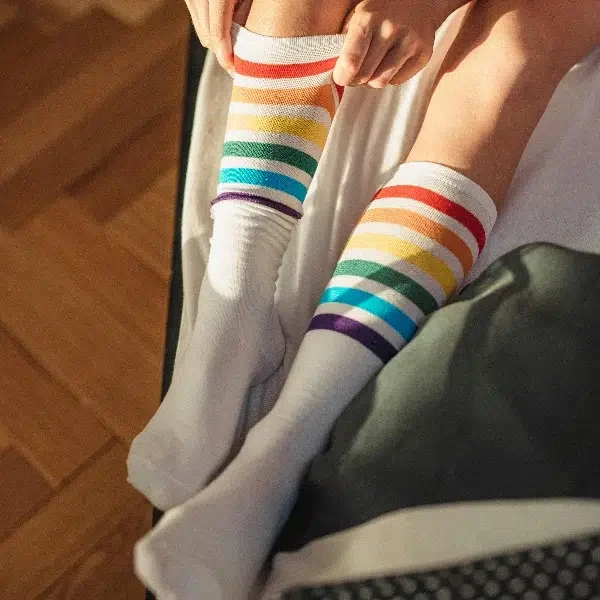
To ensure you get the maximum results from the compression stockings, you may need a doctor’s prescription. There are basically three types of compression socks;
1. Graduated Compression Stockings
These socks are the ones, which have the strongest compression at the ankles and they decrease up to the knee. They are mainly used for edema or orthostatic hypotension.
2. Anti-embolism Stockings
They require professional fitting and are usually used by people who are not mobile. They have pressure that starts reducing the ankle upwards.
3. Non Medical Support History
These are the most common compression stockings that are available at almost all pharmacies. You can feel almost the same amount of compression throughout the stocking. Usually opted for tired or achy legs.
Benefits and Uses of Compression Socks
Wearing compression socks offers enormous benefits to patients and athletes. However, the use of these socks is not limited to patients or athletes. Most people use them to relieve soreness or pain while traveling or sleeping. S0, the benefits of compression socks are countless.
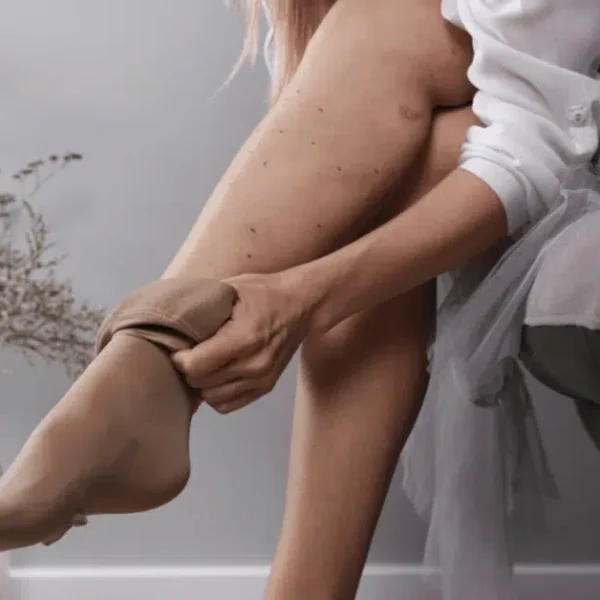
What are Compression Socks Used For?
Compression socks are quite useful for improving blood flow. Poor blood circulation can cause severe swelling and other health problems, so you should wear socks to prevent further damage to your circulatory system. Here are a few of the prominent uses of compression socks.
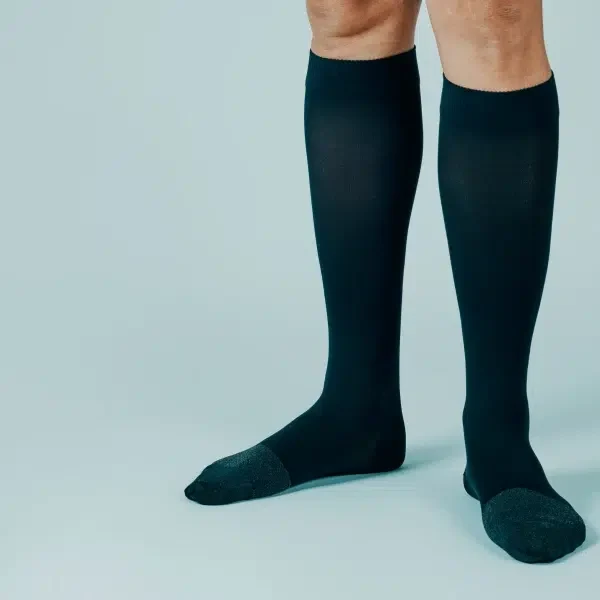
Varicose Veins
Varicose Veins are usually known for twisted or enlarged veins. Most muscular people would be able to see the veins through their skin if they have such issues. Varicose veins mainly affect the veins present in your legs due to walking, heavy exercise, and standing for too long. Compression socks help improve the condition, and reduced muscle fatigue is observed.
Pregnancy
Women use compression socks during pregnancy. The body’s weight increases during pregnancy, so women must carry it longer, causing pain and swelling in their legs or feet. The doctor recommends compression socks in this case. There could be other medical reasons, so keep in touch with your doctor before using highly compressed socks.

Athletes
Most of the athletes are used to wearing compression socks to keep the blood flow right in their legs. Heavy workouts and running could cause pain and disturb the blood flow in the lower parts of the body. The calf muscles are pulled after high-intensity workouts. The athletic performance of an athlete decreases, too. Soccer players often use compression socks during exercise recovery and practice. They use them to reduce muscle soreness as well. Therefore, most athletes suggest compression socks while doing physical activity.
Running Performance Increases
Graduated compression stockings allow your running performance to improve and keep your leg muscles recovering faster. Compression socks work perfectly well and help you avoid delayed-onset muscle soreness. Your calf muscles stay relaxed, and your running performance improves. Spider veins are not observed when you wear compression socks.
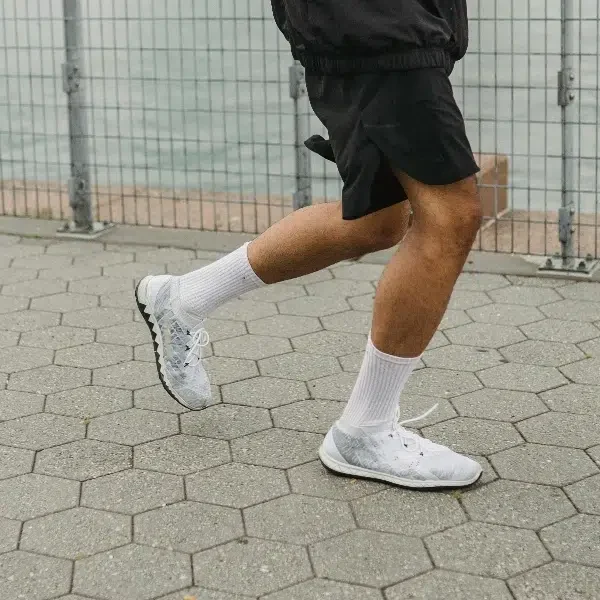
How do Compression Socks Help?
Compression socks offer multiple health benefits, including:
· A Huge Boost in Blood Circulation in your leg muscles
· Decrease swelling and pain in legs and ankles
· Prevent DVT (Deep Venous Thrombosis) in your legs
· Prevent venous Ulcers
· Prevent Varicose veins in your legs
· Manage orthostatic hypotension when you stand up after sitting for longer periods.
· Prevent blood pooling in the legs
· Reduced muscle soreness
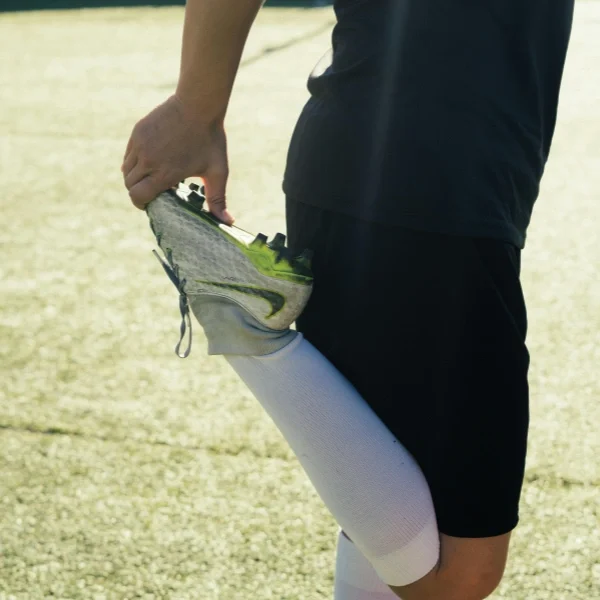
How to Pick Compression Socks?
· Put on compression socks and try them like any other socks. Start by pulling them over and once they are rolled over, check the comfort by moving your feet in all angles.
· Make an appointment with the doctor to understand how they can be beneficial to your feet if you feel or observe an issue in your blood flow with some common causes
A bonus tip
Make sure you buy two pairs of compression socks so that you can wash one pair and, in the meantime, wear another pair.
Conclusion
Compression socks have served many people and made their lives better. They are built to maintain the blood flow in your legs so that you don’t feel pain after hard workouts. Athletes, pregnant women, and patients with diseases like painful swelling and pain in the legs do wear such socks. However, different types of socks are available, and you need to pick them wisely. The best practice would be to ask your doctor before wearing compression stockings.
Read this guide to compression socks, then look for the best retailers to find the best pair and stay healthy. When you search online and offline stores, you will find many offers. And pick a fit pair of compression socks to help you ease your stress and pain.
Common Misconceptions and FAQs
There are a few misconceptions about compression socks, such as that they are just made for athletes and elderly people. These are just myths. All of you can use these compression socks. Here are a few of the frequently asked questions about Compression socks.
1. Who can wear compression socks?
Everyone can wear compression socks unless they don’t have any heart conditions.
2. Can I sleep with Compression socks?
Yes, it is quite comfortable to wear compression socks while sleeping. They even offer more benefits while lying on the bed with these socks.
3. Do Compression Socks shrink after washing?
Yes, they do. This is due to the spandex content in these socks. When you wash and dry them, they look a little smaller.
4. Do Compression Socks help you lose weight?
No, they don’t. They have nothing to do with weight loss.
5. Should I wear compression socks while traveling on flights?
Yes, there is no harm in doing that, as it helps you in such cases.
6. How do I know if compression socks are cutting the blood flow?
The tightness of the socks needs to be according to the doctor’s advice. If it is too tight, you might feel pain in your legs and have a blueish color due to blockage of blood.
7. What is it like wearing compression socks at work?
You can wear compression stockings anywhere you want. In the case of males, they are not even visible.
8. Why do I usually experience delayed onset muscle soreness?
A heavy workout or running could cause leg muscle soreness and disturb the circulatory system. It could even cause chronic venous insufficiency. So, you should wear compression socks during exercise. Less muscle soreness is observed in people who wear compression socks when they exercise.
